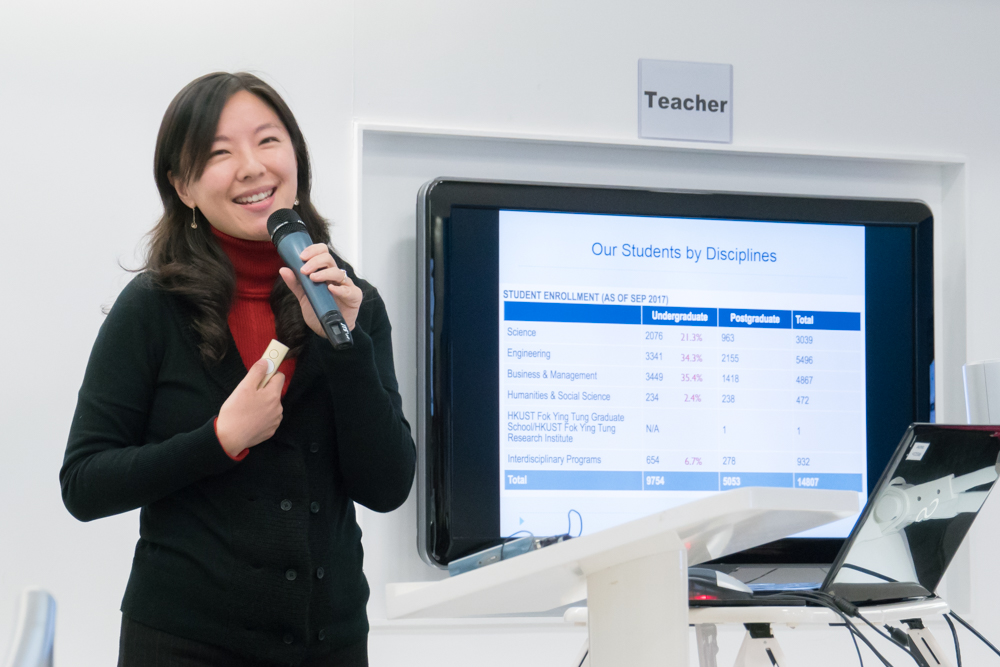The Magic of Classroom Diversity – How Does It Work?
By Michael Yu
Aspire to internationalising courses within a classroom? But still looking for clues? The teaching practice and experience of Prof. May-yi Shaw, our CoP – ITL’s HKUST-affiliated member, may come to you in a flash of inspiration.
Taking a Small Step for Big
While the power of a course title may not be acknowledged, creating one which consists of global or cultural dimensions can indeed underpin the success of any internationalisation efforts, according to Prof. Shaw’s experiences. The two tailor-made course titles “Identity Goes Global – From Border-Crossing to Boundary Remaking” and “China in the Foreigners’ Eyes” speak for themselves, stirring up the interest among students who are globally and culturally sensitive.
Drawing on Living Examples in Class
“The diversity itself can become the content of a course. It is like a living example. Every single class is like a living testimony. The readings are only about previous research. But when students sit in a classroom, hear and talk with each other, they can immediately gather the information,” Prof. Shaw remarked.
In a diversified classroom, Prof. Shaw adopted a mixed grouping strategy – students should form groups with those from different cultural backgrounds. They were also advised to form interdisciplinary groups if cultural diversity in the classroom was not obvious. Under this practice, the groups would not have any students from a dominating culture or discipline, which in turn motivated both active and passive learners to exchange thoughts in the discussions. She also noted that this approach could boost students’ confidence, especially for those who believe themselves to be less competent in English communication, in voicing their own opinions as native speakers of English were now divided into different groups and could also enhance interaction between local and non-local students.
Stepping into Someone’s Shoes
In view of Prof. Shaw’s intentional efforts in group formation, her students were able to gradually develop a sense of empathy through analysing issues and experiences drawn from their groupmates with diverse cultural or disciplinary backgrounds. She was pleased with the positive outcomes of that experiential learning process which was otherwise difficult to achieve in the traditional teaching mode. As she observed, cross-cultural groups tended to work on comparative case studies between foreign countries and Hong Kong in their course-end project assessment, indicating that students stepped out of their comfort zone to consider the perspectives of others.
Calling for Proper Listening and Speaking Etiquette
Classroom diversity suggests that there would be inevitably alternative – and even opposing – views. Prof. Shaw recalled one of her impressive teaching experiences that a local Hong Kong female student was finally willing to speak up in class to discuss a culturally controversial and sensitive topic: what were those unpleasant encounters between Hong Kong people and Chinese Mainlanders? In her classes, students are always welcomed to express opinions freely as long as they understand the importance of mutual respect.
In the hope of scaling up the benefits of internationalisation of teaching and learning to students, Prof. Shaw suggests that it is pivotal to first go through an experiential transformation – explore and develop good practices, and followed by interchange of new ideas and approaches with other teachers.
Acknowledgements
The Editor’s Pick draws on an interview with Prof. May-yi Shaw who generously shared with us her experiences and insights, and we hope we have done justice to the wisdom of her practice in the internationalisation of teaching and learning.
Cite this item
Yu, M. (2018, April). The Magic of Classroom Diversity – How Does It Work?. CoP – ITL Buzz, 2. Retrieved from https://www4.talic.hku.hk/cop-itl/whats-happening/enewsletters/issue-02/the-magic-of-classroom-diversity/.


